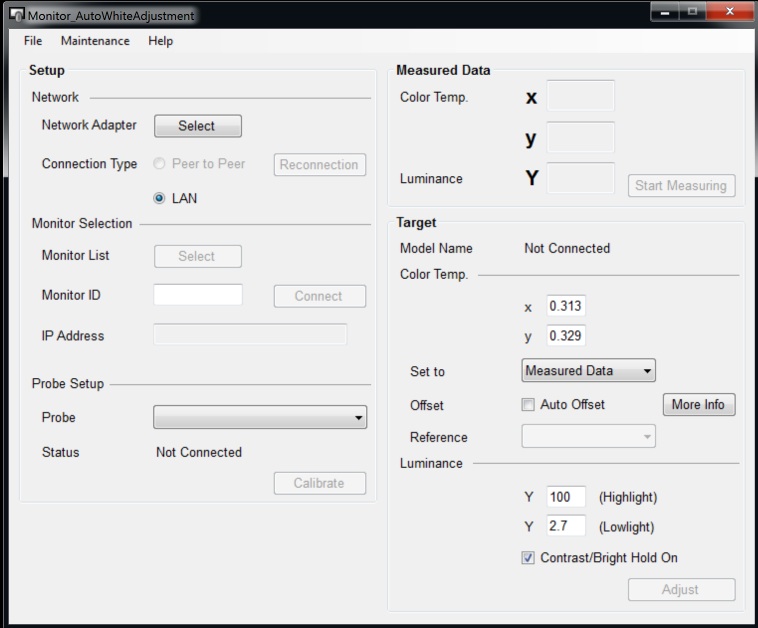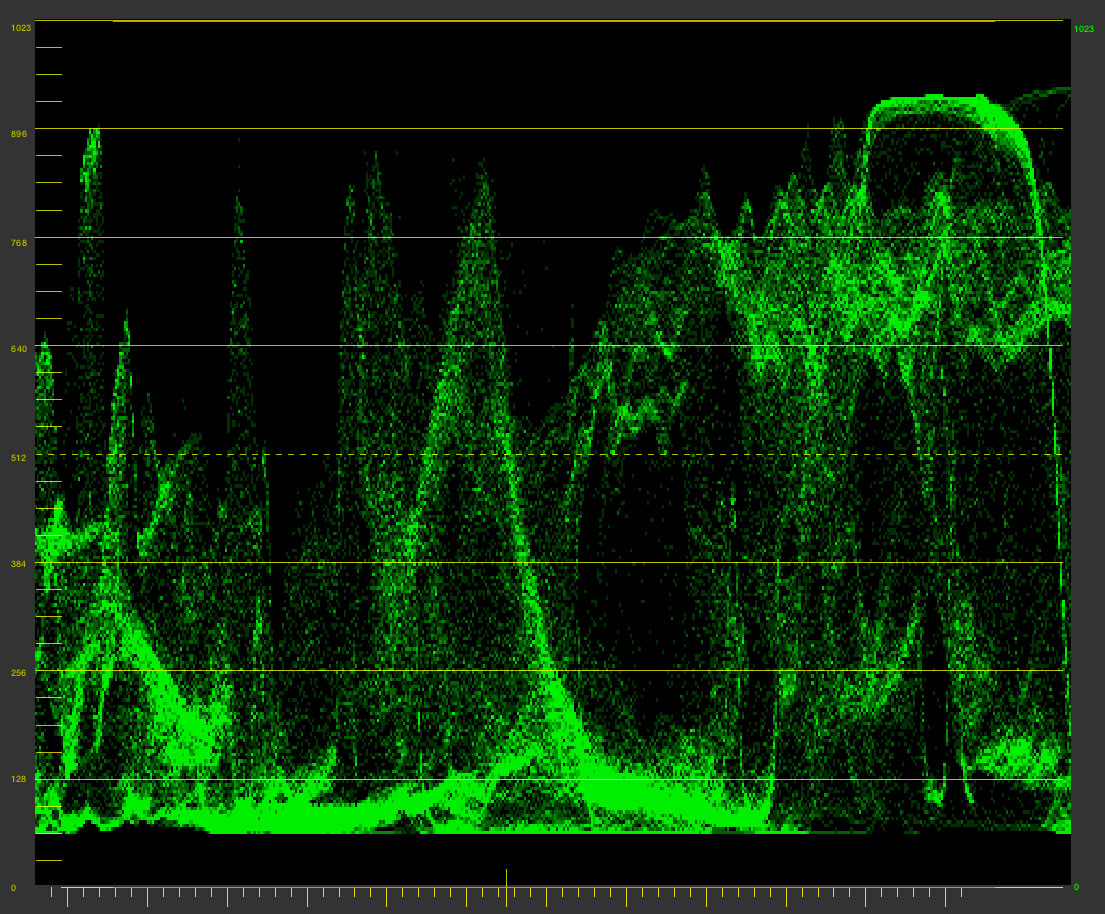Sony OLED Calibration part 2
/Sony OLED Calibration part 2
January 4, 2014
After updating Part 1 of this article, I felt an independent followup was in order. I would say that monitor calibration is at the center of the ever evolving craft that has come to be known as "DIT". This being the relatively new space we occupy, somewhere amorphously between production and post but never completely one or the other. This short article is intended to expand on and clarify some of the points of the previous one.
This little bit of nomenclature alone I find interesting as many production people I work with seem to be under the impression that my cart is the "DIT" and that I'm the "DIT Tech" or the "DIT Operator". I've even occasionally found this is how I'm listed on the call sheet. Most of the readers of this site I would assume are aware that this acronym refers to the person working the cart and not the cart itself. D.I.T. = Digital Imaging Technician, a human being, not an unwieldy pile of video and computer gack on wheels. However, these loosely thrown around three letters have come to mean something completely different depending on who you're talking to.
So in DIT, or for DIT's, or however you prefer to frame it; being able to trust what you're seeing on your monitor is one of the most important components of our craft. You have to be confident that the digital images you're working with are being faithfully represented. This is accomplished through calibration.
As in the previous article, to calibrate the Sony Trimaster EL OLED monitors I'm using the X-Rite i1 Pro or Pro 2 Spectrophotometer and Sony Automatic White Balance Software. There are of course many other spectrophotometer options available but this is one that's affordable and that I've come to trust.
Sony Automatic White Balance Software
X-Rite i1 Spectrophotometers
WHITE BALANCE ADJUSTMENT:
100% White Test Video
The first thing I'd point out when calibrating the Sony PVM series OLED's is that they are far trickier than their big brothers the BVM's. The RGB Gain and Bias as well as the Brightness, Contrast, and Chroma adjustments are much coarser than those found in the more expensive monitors. Because of this lack of subtlety, it's difficult if not impossible to perfectly hit our OLED calibration targets of x .307 and y .318 on the PVM's.
While I think the PVM's are excellent displays and priced appropriately, I have found small differences and inconsistencies from panel to panel. Let's be realistic, if these monitors were intended to be used as a true reference, the purpose of the higher end BVM's would be displaced and sales cannibalized. The PVM's when calibrated can come very close in terms of color and tonality but are not a true reference and I don't believe were ever intended to be.
While I think the quality control at Sony is good, in the case of the PVM which is not the premium line, uniformity can't be expected to be as stringent. Even on monitors that may not be able to hit x .307 and y .318 perfectly, you will always be able to get very close, for example x .308 y .318 or x .307 y .319. This will yield an "acceptable" result and most users will be hard pressed to see much, if any difference between a monitor reading these numbers and one coming up perfect. I realize that this information may not please Sony but after measuring scores of these monitors, this is the conclusion I've come to.
BIAS ADJUSTMENT:
20% Gray Test Video
The issue stated above is even more problematic with Bias calibration on the Sony PVM's. For whatever reason, it's difficult if not impossible to get a straight reading for Bias using a 20% neutral gray video signal. At least not using the X Rite probes with the Sony White Balance software. The numbers of the probe reads tend to jump around between 2 to 3 decimal places. Because of this, it's difficult to tell if you're actually aligning. I've found that if you can get the numbers within a decimal point or two of the targets, the gray video will look very neutral. Between x .306-.308 and y .316-319 has proven to be acceptable. And once again, I've encountered certain monitors that will hit the targets pretty much spot on whereas others will not. Why this specific instability? Looking for answers.
Neither of these issues are as apparent in the Sony BVM OLED monitors. These OLED panels are of the highest quality and extremely stable. If nothing less than total accuracy is required then stick with BVM monitors and a probe like the Klein K-10. If "close enough" works for you and your clients, the PVM's and X-Rite have proven to be sufficient. And by "close enough" I mean "entirely acceptable" for most us working in the field. Beyond the calibration and panel quality differences between the two lines, be aware there are also video signal processing differences that are most evident in the way motion is rendered. The BVM's employ a more sophisticated Interlace to Progressive (I/P) Conversion with less delay and smoother motion.
BEST CALIBRATION PRACTICE FOR SONY OLED MONITORS:
1. Follow the instructions in this article to automatically white balance your Sony monitor >>>
2. Input 100% white test video into the monitor after the Automatic White Balance is complete. If it is not reading the targets x .307, y .318, manually adjust RGB gains until they are.
3. Input 20% gray test video into the monitor and do the same process for Bias if necessary.
RELATED ARTICLES:







































 © 2021 Bennett Cain / All Rights Reserved /
© 2021 Bennett Cain / All Rights Reserved /